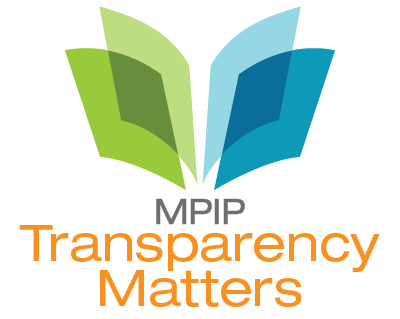Why Transparency Matters
Transparent, balanced, and timely reporting of clinical trial results in peer-reviewed journals fulfills an ethical obligation to trial participants and provides critical context to help physicians and their patients make informed treatment decisions. Transparent reporting also enables accurate and objective data interpretation and validation and advances scientific understanding. Transparency is essential to establish the credibility of the research outcomes and the study sponsor. Conversely, reports of selective, biased, or unbalanced disclosure of research results or inaccurate or incomplete reporting of contributions or potential conflicts of interest undermine the credibility of the research outcomes and the reputation of the industry.
Transparency Matters is designed to raise awareness, provide resources, and help consolidate the efforts of all the interested parties seeking to improve quality and transparency in reporting the results of industry-sponsored research.
Consistent with our mission, Medical Publishing Insights & Practices (MPIP) has collaborated with industry experts, journal editors, and other interested parties to identify the challenges and opportunities to increasing credibility and transparency in reporting the results of industry-sponsored research. Our research initially led to Ten Recommendations for Closing the Credibility Gap in Reporting Industry-Sponsored Clinical Research. This publication established the roadmap for subsequent MPIP outputs (see Best Practices). Many pharmaceutical companies have integrated the MPIP tools into their publication processes.
Collaborative Efforts
MPIP has been joined by various societies in our efforts to raise awareness and develop best practices to improve standards. Best-practice recommendations also have been developed by groups such as the International Committee of Medical Journal Editors (ICMJE) and ISMPP, who published Good Publication Practice for Communicating Company-Sponsored Medical Research (GPP3) in 2015. In recent years, several efforts have been made to improve disclosure by industry, authors, and journals.
More Can Be Done
Despite these efforts, questions remain, including how industry influence or author conflicts of interest could potentially bias the presentation of results in clinical trial publications and how these relationships are perceived by physicians, patients, and the general public. In a recent MPIP survey of medical journal editors, the majority perceived an improvement in transparency and credibility of industry-sponsored clinical trial publications (2010-2015), but the editors also highlighted areas for continued commitment to embedding best practices (Transparency and Credibility of Industry-Sponsored Clinical Trial Publications: A Survey of Journal Editors. Mooney LA, Fay L, DeCastro B, Zanki TA, Mansi B. Curr Med Res Opin. 2019;35(7):1221-1230.). Companies across the pharmaceutical industry continue to work with authors and journals to improve the transparency of industry-sponsored clinical research and enhance credibility.
The goal of Transparency Matters is to broaden the conversation around transparency in medical publications, promote best practices, and engage interested parties in this important mission.
Publications/Disclosure Policies
To further the Transparency Matters mission, the MPIP co‑sponsors share links to their current publication/disclosure policies:
Amgen: Clinical Trial Transparency, Data Sharing and Disclosure Practices
AstraZeneca: Global Publications Policy
Bayer: Clinical trial transparency policy
Biogen: Clinical Trial Transparency and Data Sharing
Bristol-Myers Squibb: Clinical Trials & Research–Disclosure Commitment
GlaxoSmithKline: Public Disclosure of Clinical Research
Janssen: Clinical Trial Data Transparency Statement
Merck: Policies and Perspectives
Pfizer: Public Disclosure of Pfizer Clinical Study Data and Authorship
Journals Accepting Specialized Data by Type
This feature is a resource that can be used to identify journals that align with your manuscript content for a variety of atypical scenarios. Journals indexed on this site accept reports where data are either unfavorable, are in need of a rapid review, are in a case study or other special interest content, are in need of continuing medical education accreditation, are to be described for the purposes of reuse, or are from in silico experimentation.

